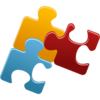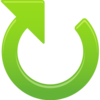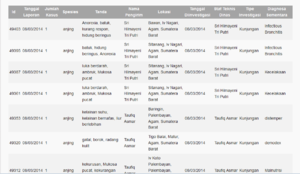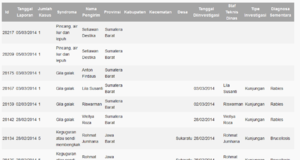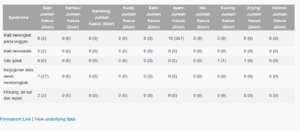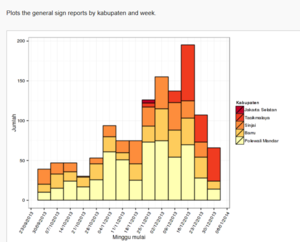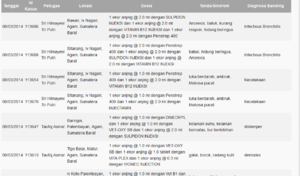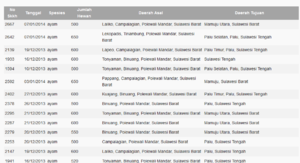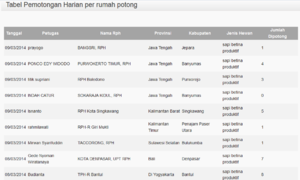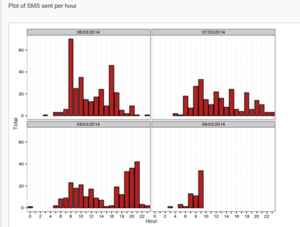What does it do?: Perbedaan revisi
| (17 revisi antara oleh pengguna yang sama tidak ditampilkan) | |||
| Baris 1: | Baris 1: | ||
| − | + | {{languages}} | |
| − | + | =What does it do?= <!--T:1--> | |
| + | ==Data linkages make data more powerful== <!--T:2--> | ||
| + | [[Image:Addons256.png|100px|frameless|left]] | ||
Using iSIKHNAS, we can link laboratory submission data with disease reports; maps with movement data or outbreak reports; slaughter data with production and population data; and all smoothly and automatically in easy to use formats. That is great for decision makers at every level and good for everyone who is working in the animal health sector. | Using iSIKHNAS, we can link laboratory submission data with disease reports; maps with movement data or outbreak reports; slaughter data with production and population data; and all smoothly and automatically in easy to use formats. That is great for decision makers at every level and good for everyone who is working in the animal health sector. | ||
| − | + | ==Flexible approaches suit all types of users== <!--T:4--> | |
| + | [[Image:Refresh256.png|100px|frameless|left]] | ||
| + | Data submission is possible via SMS, Instant Messaging (IM), spreadsheets and the website. | ||
| + | Data viewing is easy via spreadsheets automatically emailed, the website and SMS system query functions. | ||
| + | Direct database access through other software such as QGIS for mapping offers infinite flexibility for advanced users. | ||
| − | The website is | + | ==Automated reporting promotes greater efficiency and accuracy== <!--T:3--> |
| + | [[Image:Clockwise-arrow256.png|100px|frameless|left]] | ||
| + | The variety of reports available via the website or automatically sent by email to users is always expanding. Upon request, new reports can be created for regular viewing and reporting, analysis and information sharing. The raw data upon which these reports is based can always be accessed and downloaded for further use, analysis or reporting. | ||
| + | |||
| + | <!--T:5--> | ||
| + | '''Here are a very few examples of the automated reports available.''' | ||
| + | |||
| + | |||
| + | |||
| + | <!--T:6--> | ||
| + | [[Image:Disease_report1.png|300px|thumb|left|'''A simple disease report''']] | ||
| + | [[Image:Priority_disease_report1.png|300px|thumb|centre|'''A priority syndrome report''']] | ||
| + | [[Image:Priority_disease_report2.png|300px|thumb|left|'''Priority disease report''']] | ||
| + | |||
| + | <!--T:7--> | ||
| + | [[Image:General_signs_report_by_kabupaten_by_week.png|300px|thumb|centre|'''Many reports are available as a graph.''']] | ||
| + | |||
| + | <!--T:8--> | ||
| + | [[Image:Treatment_report.png|300px|thumb|left|'''Some reports relate to wider activities such as treatment, for example.''']] | ||
| + | [[Image:Movement_report1.png|300px|thumb|centre|'''Some reports relate to wider activities such as movement.''']] | ||
| + | [[Image:Productive_female_slaughter.png|300px|thumb|left|'''Other reports relate to slaughterhouse activities''']] | ||
| + | |||
| + | <!--T:9--> | ||
| + | [[Image:SMS_sent_per_hour.png|300px|thumb|centre|'''There are many other reports which relate to the system, staff or resources.''']] | ||
Revisi terkini pada 20 November 2014 17.10
| Language: | [[::What does it do?|English]] • [[::What does it do?/id|Bahasa Indonesia]] |
|---|
Daftar isi
What does it do?
Data linkages make data more powerful
Using iSIKHNAS, we can link laboratory submission data with disease reports; maps with movement data or outbreak reports; slaughter data with production and population data; and all smoothly and automatically in easy to use formats. That is great for decision makers at every level and good for everyone who is working in the animal health sector.
Flexible approaches suit all types of users
Data submission is possible via SMS, Instant Messaging (IM), spreadsheets and the website. Data viewing is easy via spreadsheets automatically emailed, the website and SMS system query functions. Direct database access through other software such as QGIS for mapping offers infinite flexibility for advanced users.
Automated reporting promotes greater efficiency and accuracy
The variety of reports available via the website or automatically sent by email to users is always expanding. Upon request, new reports can be created for regular viewing and reporting, analysis and information sharing. The raw data upon which these reports is based can always be accessed and downloaded for further use, analysis or reporting.
Here are a very few examples of the automated reports available.

